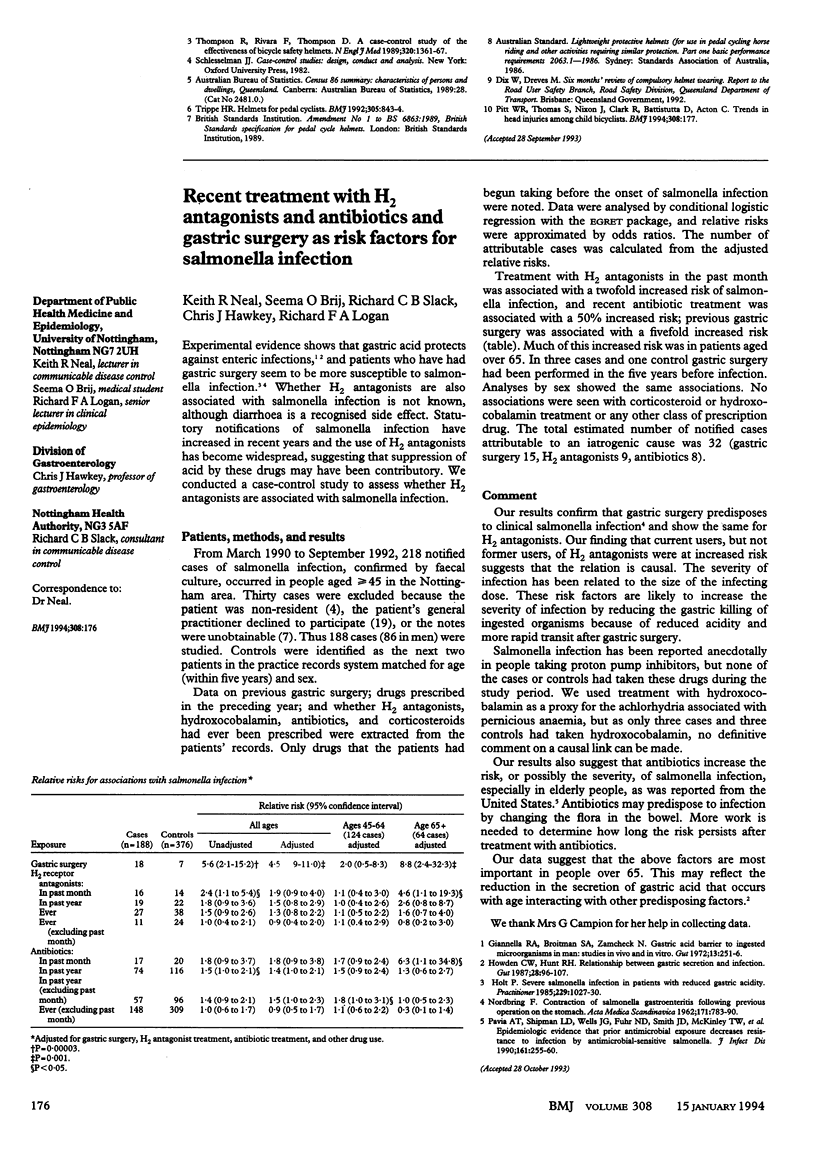Abstract
OBJECTIVE--To examine the risk of injury to the head and the effect of wearing helmets in bicycle accidents among children. DESIGN--Case-control study by questionnaire completed by the children and their carers. SETTING--Two large children's hospitals in Brisbane, Australia. SUBJECT--445 children presenting with bicycle related injuries during 15 April 1991 to 30 June 1992. The cases comprised 102 children who had sustained injury to the upper head including the skull, forehead and scalp or loss of consciousness. The controls were 278 cyclists presenting with injuries other than to the head or face. A further 65 children with injuries to the face were considered as an extra comparison group. MAIN OUTCOME MEASURES--Cause and type of injury, wearing of helmet. RESULTS--Most children (230) were injured after losing control and falling from their bicycle. Only 31 had contact with another moving vehicle. Children with head injury were significantly more likely to have made contact with a moving vehicle than control children (19 (19%) v 12 (4%), P < 0.001). Head injuries were more likely to occur on paved surfaces than on grass, gravel, or dirt. Wearing a helmet reduced the risk of head injury by 63% (95% confidence interval 34% to 80%) and of loss of consciousness by 86% (62% to 95%). CONCLUSIONS--The risk of head injury in bicycle accidents is reduced among children wearing a helmet. Current helmet design maximises protection in the type of accident most commonly occurring in this study. Legislation enforcing helmet use among children should be considered.
Full text
PDF



Selected References
These references are in PubMed. This may not be the complete list of references from this article.
- Nixon J., Clacher R., Pearn J., Corcoran A. Bicycle accidents in childhood. Br Med J (Clin Res Ed) 1987 May 16;294(6582):1267–1269. doi: 10.1136/bmj.294.6582.1267. [DOI] [PMC free article] [PubMed] [Google Scholar]
- Pitt W. R., Thomas S., Nixon J., Clark R., Battistutta D., Acton C. Trends in head injuries among child bicyclists. BMJ. 1994 Jan 15;308(6922):177–177. doi: 10.1136/bmj.308.6922.177. [DOI] [PMC free article] [PubMed] [Google Scholar]
- Sacks J. J., Holmgreen P., Smith S. M., Sosin D. M. Bicycle-associated head injuries and deaths in the United States from 1984 through 1988. How many are preventable? JAMA. 1991 Dec 4;266(21):3016–3018. [PubMed] [Google Scholar]
- Thompson R. S., Rivara F. P., Thompson D. C. A case-control study of the effectiveness of bicycle safety helmets. N Engl J Med. 1989 May 25;320(21):1361–1367. doi: 10.1056/NEJM198905253202101. [DOI] [PubMed] [Google Scholar]
- Trippe H. R. Helmets for pedal cyclists. BMJ. 1992 Oct 10;305(6858):843–844. doi: 10.1136/bmj.305.6858.843. [DOI] [PMC free article] [PubMed] [Google Scholar]


